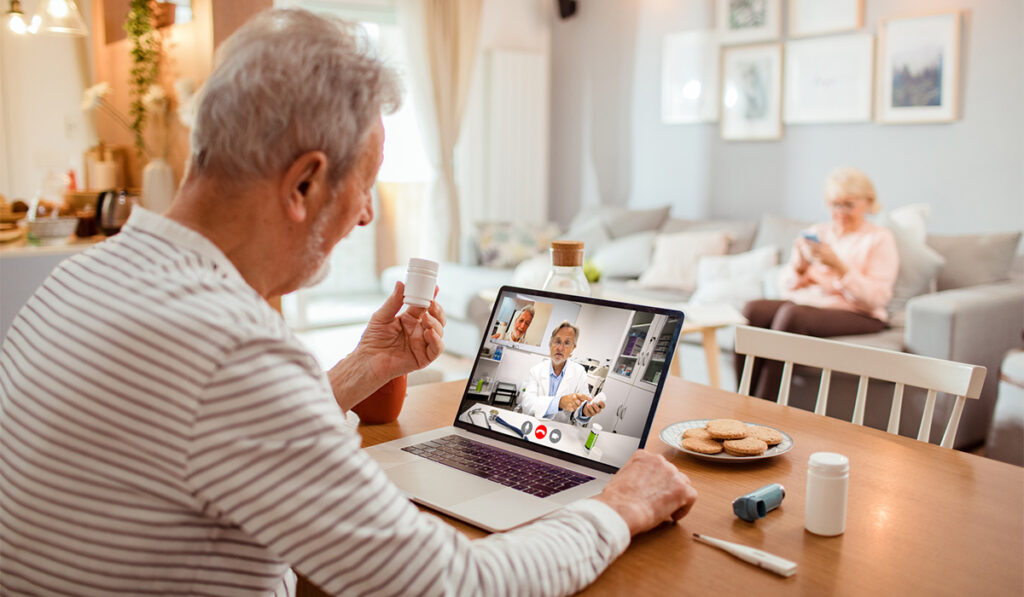While telehealth can potentially increase access to health care, the use of internet technology may not be equally beneficial to all patients.
That was among the findings of Sara Horst, M.D., M.P.H., medical director for Telehealth Ambulatory Services at Vanderbilt University Medical Center, and her colleagues from a recent study. They reported their work in JAMA Network Open.
“Telehealth has exploded in the last five years, and the way we did it five years ago is completely different than the way that we get to do it now,” Horst said.
“Are we leaving patients behind?”
The initial implementation by the team occurred very quickly, amid the pandemic, and as with any new program, glitches may occur, she said.
“Are we leaving patients behind?” was something Horst wondered, as she regarded the potential for differential access to health care among varied patient groups.
Elements of Telehealth Success
Her team set out to investigate factors involved in the success or failure of cases involving Vanderbilt’s telehealth program. They started with their own prior research and findings from existing literature, which suggested patient demographic factors may influence the risk of failure from such factors as incomplete or missed telehealth video visits. Horst and her colleagues then began to consider whether societal influences also may have a role.
Horst and her team evaluated associations between telehealth failure and a range of demographic factors. They looked at health-literacy measures and also added in social determinants of health, using a tool called the area deprivation index, which provides information on a variety of social and economic factors at the neighborhood level.
The area deprivation index looks at several domains, including education, income, employment, housing, and other household characteristics. It even incorporates certain details such as the percentage of neighborhood households lacking a telephone or occupied housing units without complete plumbing.
Barriers to Success
After assessing 18,130 scheduled telehealth visits, a key finding from the study was that patients with high scores on the area deprivation index were significantly more likely to have a failed video telehealth visit in their chart.
“These are things that we as a society probably need to be thinking about for these patients as well.”
According to Horst, another study found that areas with a high area deprivation index also are likely to have poor access to high-quality WiFi.
“That really plays into telehealth and patients’ access to digital care,” Horst said. “These are things that we as a society probably need to be thinking about for these patients as well.”
Low health literacy, in addition to various other patient characteristics, was also associated with telehealth video visit failure, and audio-only visits, the researchers found.
Opportunities for Intervention
The study’s findings have provided “a snapshot into the complexity around giving health care to patients, and often one size can’t fit all,” Horst said.
Options to improve health care access range from patient-focused interventions in the current system to switching to an alternative approach. Community outreach or satellite clinics are other options, Horst says. Focused interventions could help patients by providing access to adequate telehealth equipment or scheduling a pre-visit phone conversation to help guide patients through the telehealth process.
“And if they can’t get access, help them figure out an alternative means for their care,” she said.
Additionally, Horst mentioned options for clinic-to-clinic communication. For example, a patient could visit a local office for telehealth access to a specialty clinic located farther away.
“We have a 96 percent telehealth success rate, over the past year.”
This study was conducted at the start of the COVID-19 pandemic, and since that time, the team has worked hard to ensure telehealth success at Vanderbilt, Horst said.
“We have a 96 percent telehealth success rate, over the past year,” she said.





